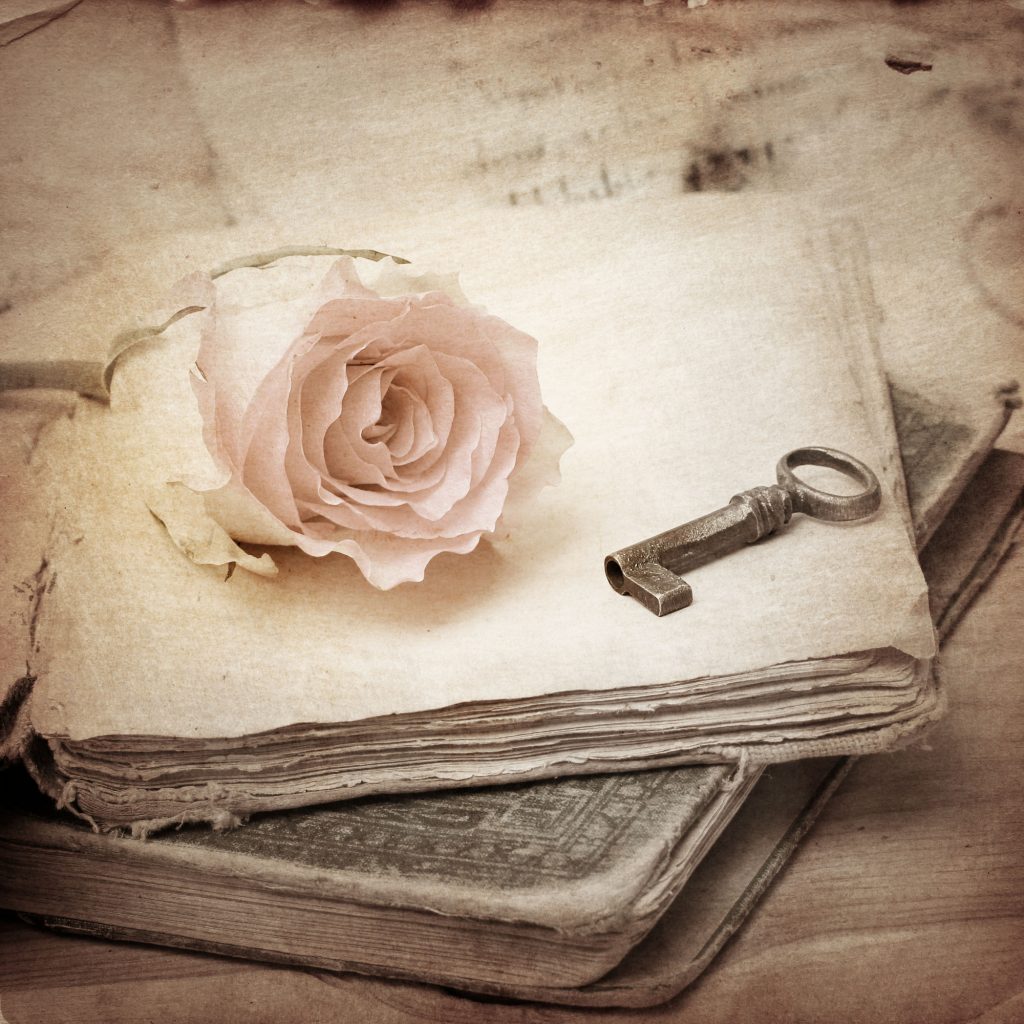
Couples getting married often use a key as a motif for their wedding. It makes sense. The mere presence of a key indicates something of value, a treasure worth protecting. That understanding is what inspired me to create a wedding ceremony ritual I call “The Key to My Heart.”
Throughout time, keys have protected physical items such as gold, silver, currency, crops. Keys have also been associated with knowledge and success, freedom and liberation, authority and power. Such associations have been around for centuries. For example, keys on a coat of arms indicate a lineage known for trust and loyalty.
Keys and Cultural Traditions
Cultures all over the world have stories about keys. In Ireland, many folktales feature magical keys that can open any door, especially doors to the fairy realm. That’s where mortals are known to go in search of health, wealth, and love.
In Ancient Rome, grain for the community was kept in special warehouses, guarded by Portunas, the god of doors and keys. Because the grain was harvested in August, that’s when the Romans held a festival to honor Portunas. As with most festivals, it would include a ritual fire. Fire was believed to purify. People who wanted to turn their lives around, would toss their keys into the fire for good luck.
In Ancient Greece, the gates to the Underworld were locked with a golden key to keep the souls of the dead from escaping.
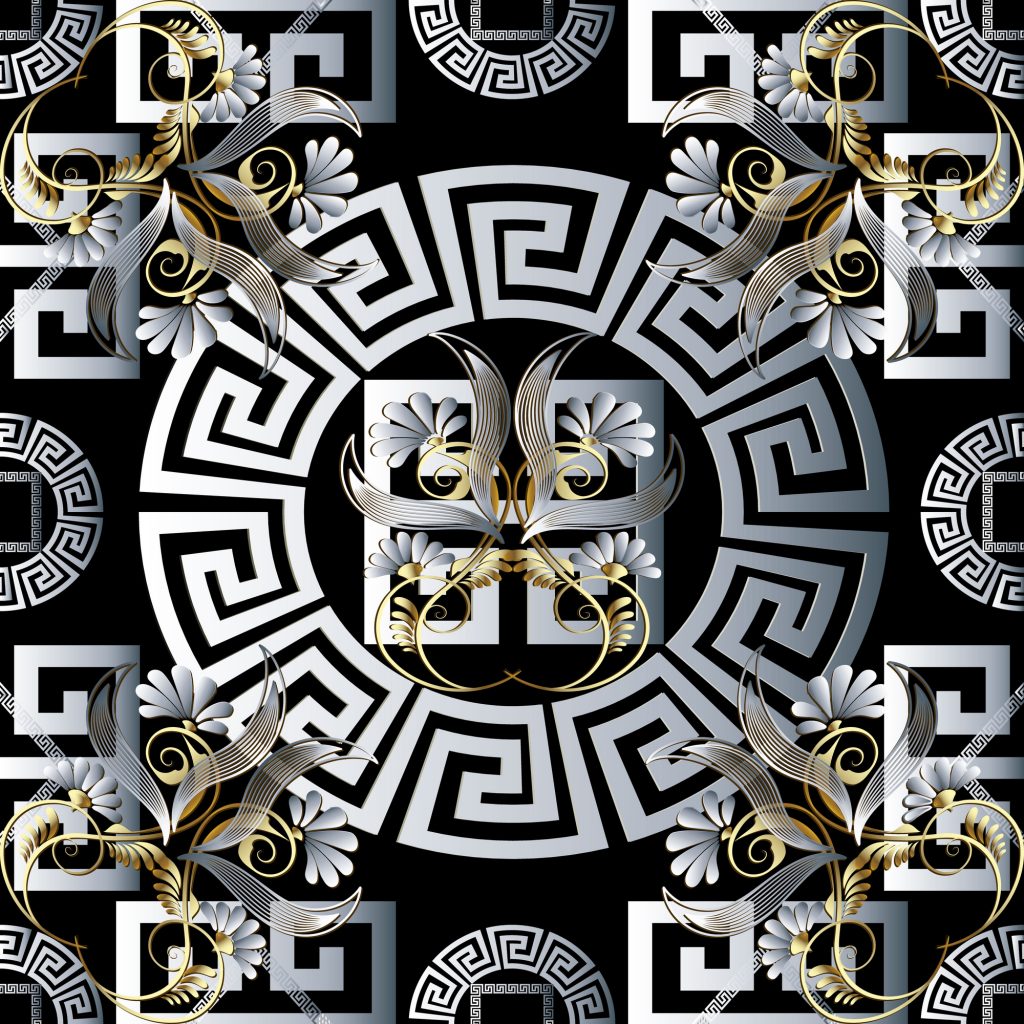
That idea is echoed in the pattern we call the Greek Key. It symbolizes the labyrinth that imprisoned the part-man-part-bull monster called the Minotaur.
In some cultures in Northern Europe, when a woman got married she became responsible for the family’s property. As a sign of her power, she wore a key around her neck or on a belt, someplace where people could see it.
In Sweden, the doors of a church were seen as the opening to eternal life, with the keys having the power to cure the sick. Church keys were formed with three circles on the top. If a child was sick, a piece of his or her clothing would be passed through the circles on the key.
Church keys were often on loan to members of the community, and not just to cure illness. If a young man were attracted to a young woman, he would thread his handkerchief through the circles on the key and then strike the woman with the handkerchief. Doing so would supposedly cause her to fall in love with him and be forever compliant. Supposedly.
Keys for All
For thousands of years, people stored their belongings in chests and boxes. In the late 1800s, it became popular to have a cabinet, or a desk, or a special drawer that could be locked. Eventually, the desire for a personal container that could be locked took shape in a girl’s little pink diary with its flimsy, but oh-so-meaningful, lock and key.
Keys in Books and Movies
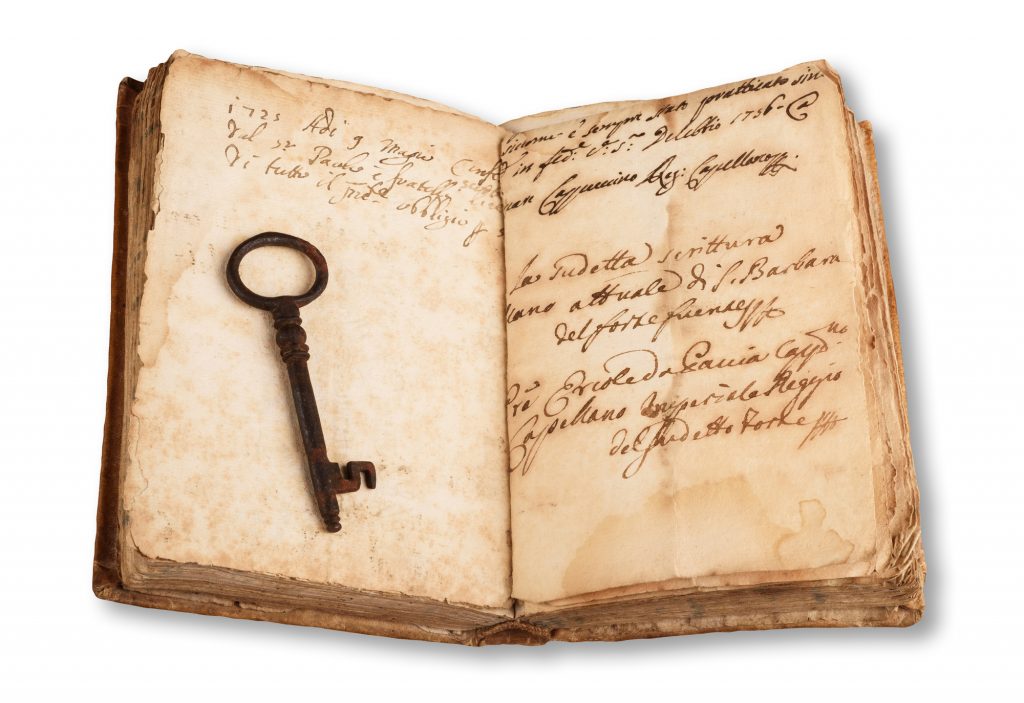
There are plenty of books and movies in which a character finds or loses or inherits a key.
In the novel Alice in Wonderland, there’s a key that opens a tiny door. In the movie Pirates of the Caribbean: Dead Man’s Chest, a key features in the plot. In the movie The Lost Keys, a woman vows to throw a party if she can just find her keys. The WWII movie Sarah’s Key also features a key in the plot.
Keys to Cities and Castles and Home Sweet Home
In general, when we think of keys, we think about opening or closing something. We think about binding or releasing something, or someone. We think about power.
When a city wants to honor someone, an official gives the honoree the keys to the city, a symbolic gesture of appreciation. In the old days, if a city were attacked and forced to surrender, the city gave the victor the keys to the city. It wasn’t a symbolic gesture. The key gave the victor the power over the city.
At the Tower of London, every night for over the last 700 years, the Yeoman Warders carry out the famous “Ceremony of the Keys,” originally to protect members of the royal family and guests who might be staying at the Tower of London. The ritual is still performed, though now to protect the Crown Jewels. The Chief Yeoman Warder still carries a candle lantern and the Queen’s keys and performs his duty at precisely 21:52 hours. These days, seriously high tech security measures are also involved.
Before there were locks and keys, people often protected their valuables with hungry animals — dogs, snakes, even crocodiles.
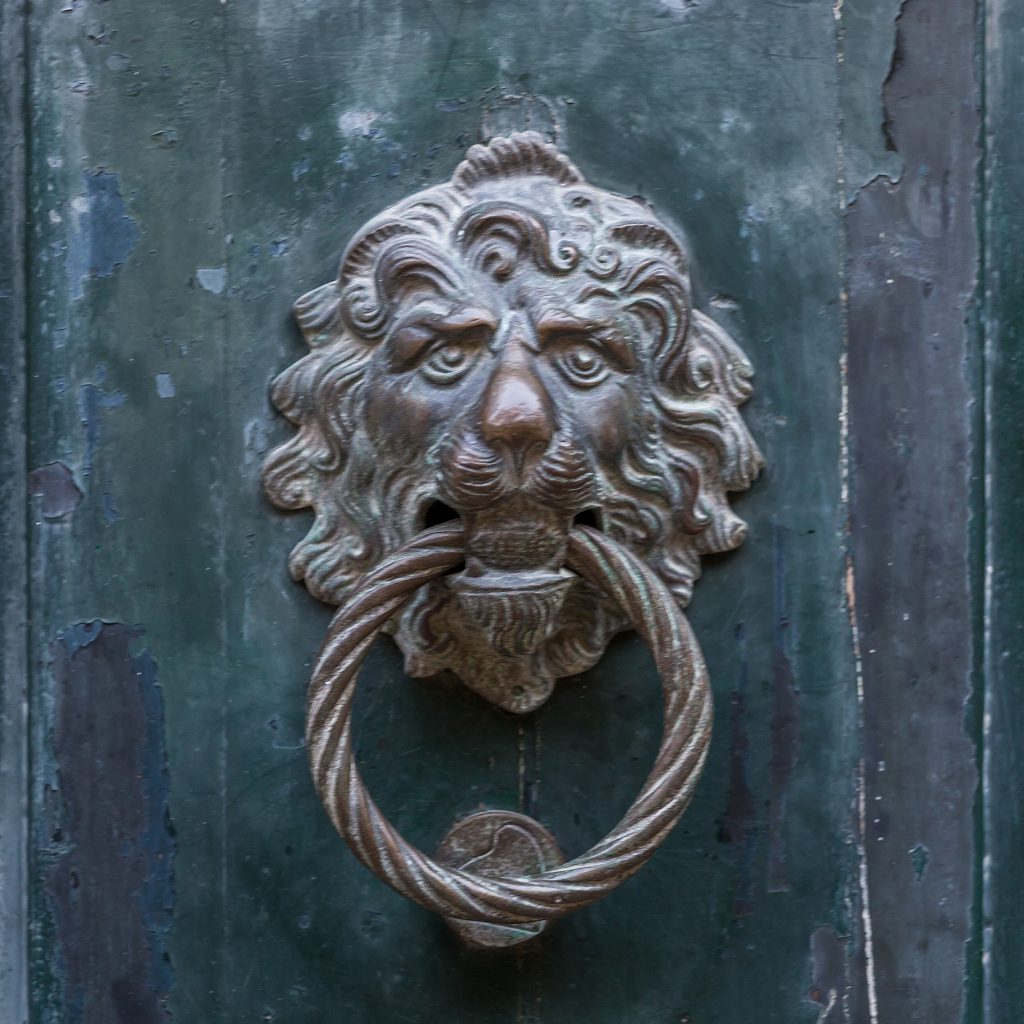
That concept of a imposing animal protecting the lock and key eventually led to door knockers that feature dragons and lions.
“Key to My Heart” Wedding Ritual
All this background about keys is to reinforce the idea that whoever holds a key, holds power. Here’s how I incorporated keys in a wedding ceremony. It was part of the family blessing.
I begin all family blessings by telling guests about the wooden plaque hanging in my kitchen. The words, “Home is where your story begins” is what inspires me to ask my couple during the planning session about how they had been influenced by their parents and grandparents.
During the ceremony, I share with the guests what I learned from the couple — edited, of course, and with their prior approval.
Most of my couples have shared stories that are heartwarming, funny, tender, life-affirming.
Sometimes, the stories are heart-breaking, with tales of being rejected, abused, abandoned. A candy-coated telling would ring hollow because, in all likelihood. the guests already know the truth. At the same time, a wedding is a joyful occasion and everything about the ceremony should echo that joy. So I say, “John (or Jane) learned early in life what we all eventually learn, that the road through life has potholes.”
When I’m writing the ceremony, this is where I go through my notes to find what Jane saw in John that she found admirable. Because, chances are good that John developed those admirable qualities because of the hardships he endured as a child. During the ceremony, I might say, “Jane admired John’s independent spirit and his loyalty to his friends.”
In turn, I might talk about how John appreciated Jane’s devotion to her family and how she always encouraged the children she taught. People close to the couple can read between the lines.
What I almost always find is a shared sense of humor, a shared work ethic, and shared values. I say a few words about that, too.
Then I remind the guests that the thoughts the couple expressed about each other are “keys” to who they are. Keys. Like a clue or a code, something that can unravel a mystery or open a treasure.
Then I address the couple directly and say, “Remember, no matter how well you know each other, there’s more to be discovered, more happiness to share.”
To the guests, I say, “Long ago, keys were forged of iron, the metal continually hammered and shaped into the desired form then tempered in fire to find its strength.”
To the couple: “May whatever troubles come your way strengthen the bond between you.”
To the guests, “Long ago, the mere presence of a key said there was something worth guarding, preserving, protecting.
To the couple: “Your love is worth guarding, preserving, protecting.”
To the guests: “Every key was made to work only when paired with a particular lock.”
To the groom: “Of all the women in the world, you fell in love with Jane.”
To the bride: “Of all the men in the world, you fell in love with John.”

To the guests: “Above all, keys of old were made to last.”
This is when I invite the moms (or the dads, or a grandparent) to join me. To illustrate the next part, assume the moms come up. Also assume that all the family dynamics are good.
Prior to the ceremony, I’ve met with the moms and I’ve given each of them a key about 3 inches long, decorated with streaming ribbons. Most of the guests won’t see the actual key but they will see the ribbons. Since a ritual is a visible act performed with invisible intent, seeing the ribbons helps the guests feel the energy of the ritual itself.
I turn to the moms. “A few moments ago, I spoke about the humor, confidence and sense of adventure, about the honesty, kindness, and compassion that John and Jane said they learned from their families. The keys you hold represent those gifts, for it is the love and guidance that parents give their children that forge the keys to their future happiness. The keys you hold also contain the knowledge of where your child is vulnerable – the fears of a first-grader, the insecurities of a teenager, the tender spots they’ll always protect, the dreams they’ve yet to fulfill. Please give your children the key to their ultimate happiness.”
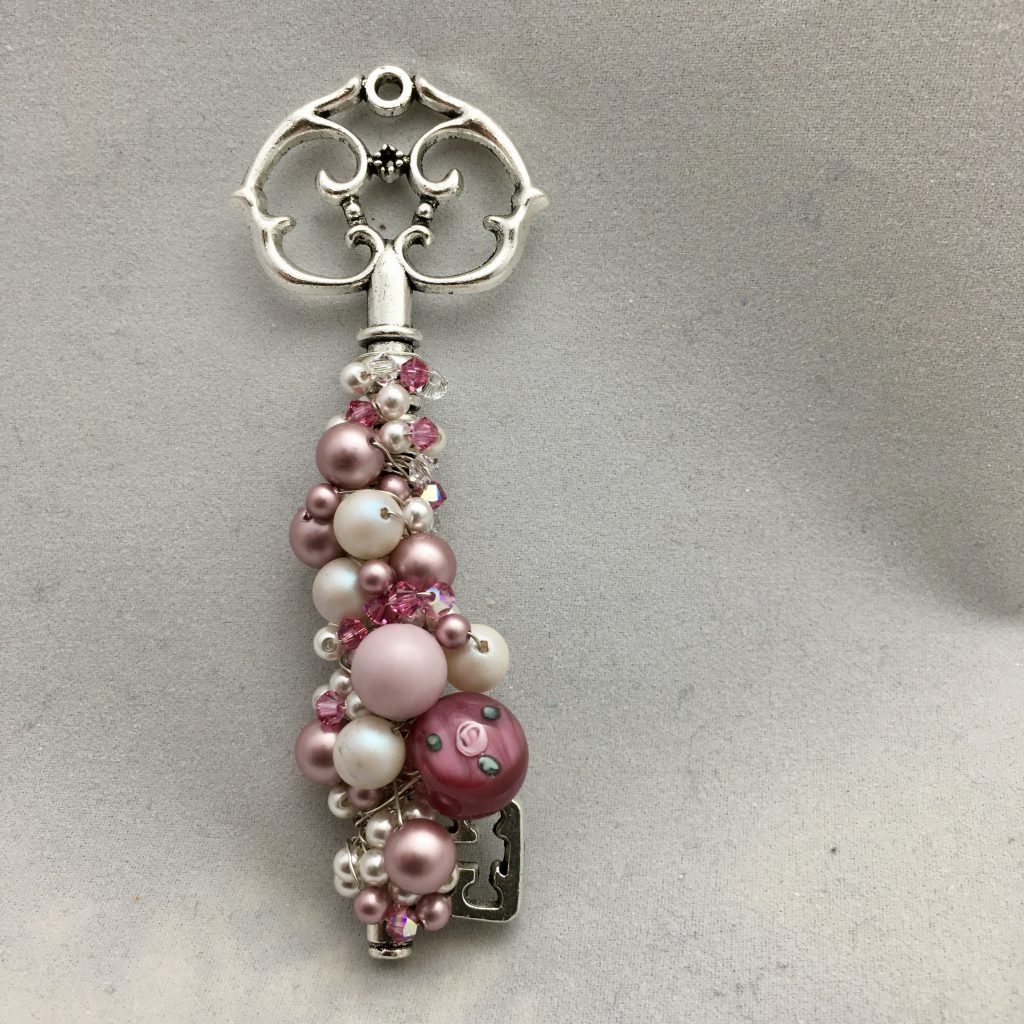
Each mom gives her child a key. (Be sure to let the photographers and videographers know in advance about this part of the ceremony!)
Sometimes, the moms simply present the keys and return to their seats. Sometimes, they share a few words of what I call “wedding wisdom.” And then they return to their seats.
Now I talk directly to my couple and say, “You each now hold the key to a valuable treasure – nothing less than your history, your happiness, your heart. What will you do with your key? Hide it so no one can ever use it? Hang it up for everyone to see? Toss it in a drawer? Or, perhaps something else?”
At this point, John and Jane each contemplate their key. And then, lovingly and sometimes with serious looks, sometimes with big smiles, they exchange keys. The invisible intent — the mutual trust — is immediately recognized by their family and guests. I then take their keys and place them on a little side table.
Anniversary Celebration and Vow Renewal
After the wedding, I encourage the couple to celebrate their anniversary with their keys. Add a ribbon, or a charm, or a scrap of paper on which they’ve each written a wish for the year ahead. Let each other know: you still have the key to my heart.
Should you decide to renew your vows, incorporate the festooned key into the ceremony. Your Celebrant can incorporate items on your keys into your ongoing love story.
First Look
If a couple likes the “Key to My Heart” ritual but, for whatever reason, don’t want to include it in the ceremony, they can always make it part of their “first look.” That’s when they see each other for the first time on their wedding day, before the ceremony begins.
Picture the scene. The bride and groom are each holding the key that can unlock the deepest, most vulnerable parts of their heart. Their ceremony will begin in an hour. They are keenly aware that they’re about to go through a rite of passage that will change them forever. With no one with them but their photographer, they share that private “first look.” Without words, they give each other the key that says, “I trust you. Let’s unlock the future together.”
With some advance coordinating with the florist, the keys can be attached to the bouquet. If neither is carrying a bouquet, ideally someone’s clothing will have pockets. If not, the couple can give their keys to the photographer for safekeeping until after the ceremony.
Pre-Engagement Symbol of Intent
A key can also be used before an official engagement. You want to propose but, for any number of reasons, now isn’t the right time. Give a key.
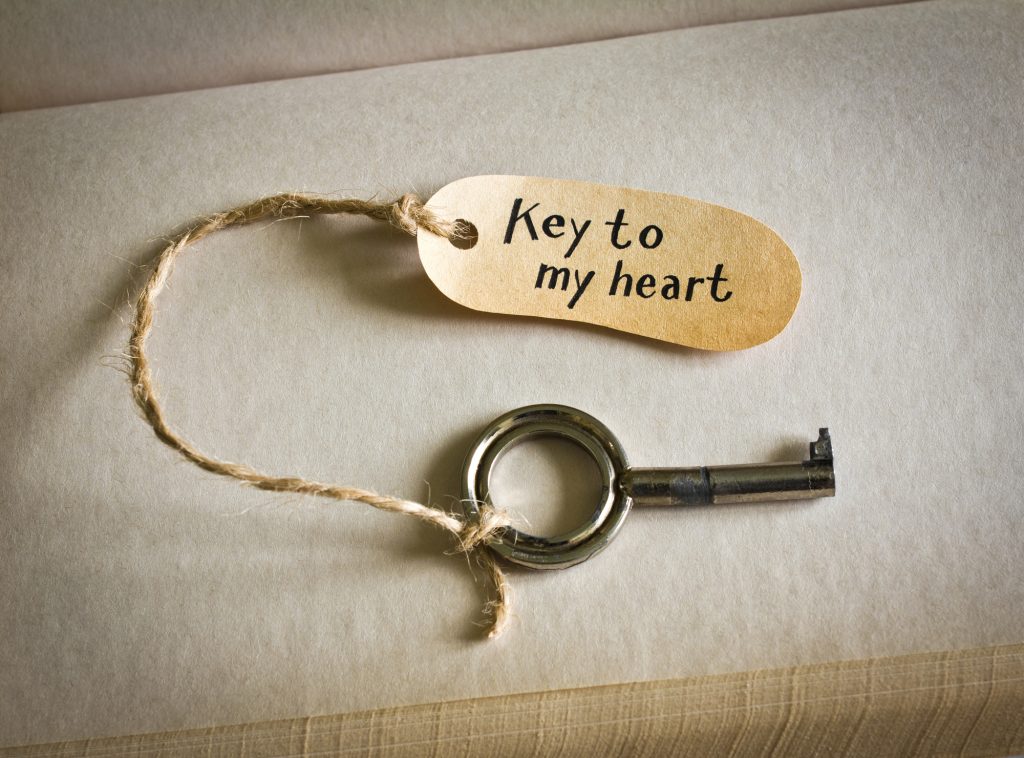
If you can’t give it in person (I’m thinking of our men and women in the military), mail it with a note that says simply: “Here is the key to my heart. I trust you to keep it safe.” The idea is similar to giving a promise ring, but is more creative.
Here’s another idea. Imagine the two of you are on vacation. You realize you want to spend the rest of your life with this person. You want a ritual to celebrate your feelings.
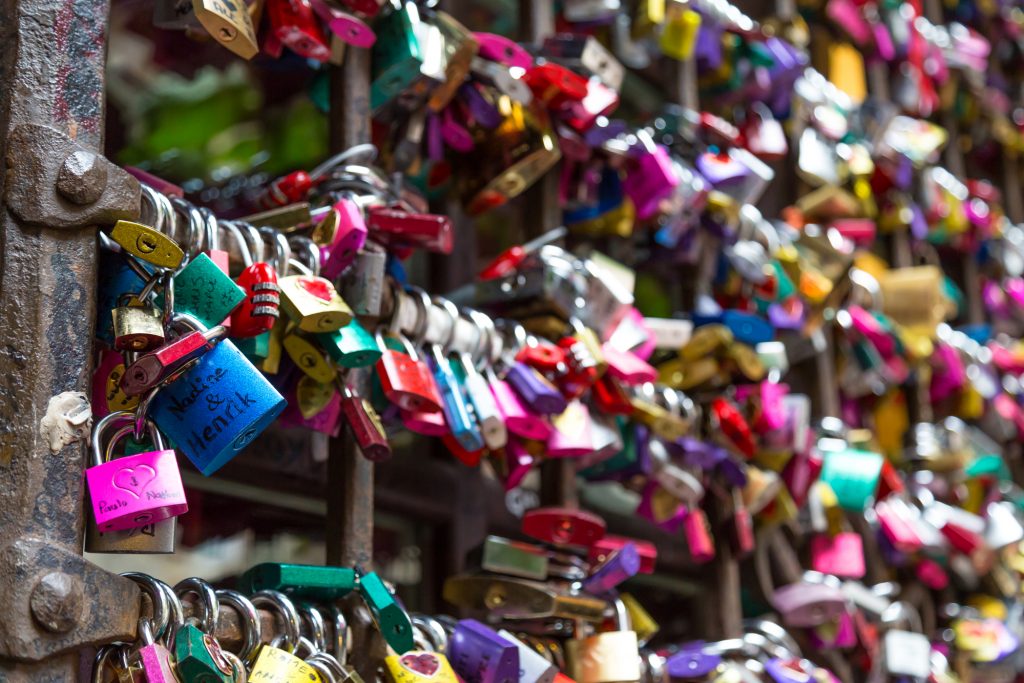
Look for a “lovers’ bridge.” Lots of cities have them. These are the bridges adorned with padlocks placed by couples in love. Their commitment to each other is also a commitment to return to the bridge someday and relive their memories.
Engagement
Suppose this is the right time to propose. You both know it. The other person is expecting you to ask the question. You want an element of surprise.
Imagine the two of you are in a vineyard, the same vineyard where you had your first date. At the appropriate moment, you reach into your pocket and pull out a box. But it’s not a ring box. It’s a gift box. Inside is a key, embellished with Swarovski crystals and pearls, strung on a cord so the key can be worn as a necklace. Yes, it’s beautiful, but it’s not what was expected. Then you retrieve another box…the ring box. Cue the smiles and tears of joy.
Unlock the Secrets of Self-Knowledge
Did you know that when a Girl Scout advances to become a cadette, she is given a silver key. It symbolizes her ability to unlock a metaphorical door and begin a journey of self-knowledge, or realizing her self-worth.
The fact that the key is silver is significant. Silver is the metal of the Moon, the orb of the feminine. A key can be a powerful symbol in a ritual to honor a girl’s first menses, her first moon.
For years, I had a poster on the wall of my office that said, “All the wonders you seek are within you.” The poster is gone. The message remains, as powerful as it ever was.
Whatever your age, if you’re ready to go on a journey of self-discovery, you will no doubt encounter metaphorical closed doors, hidden chambers, locked vaults, buried secrets. Use a key as a talisman for your inner adventure. Wear the key as a necklace. Place it beside your computer.
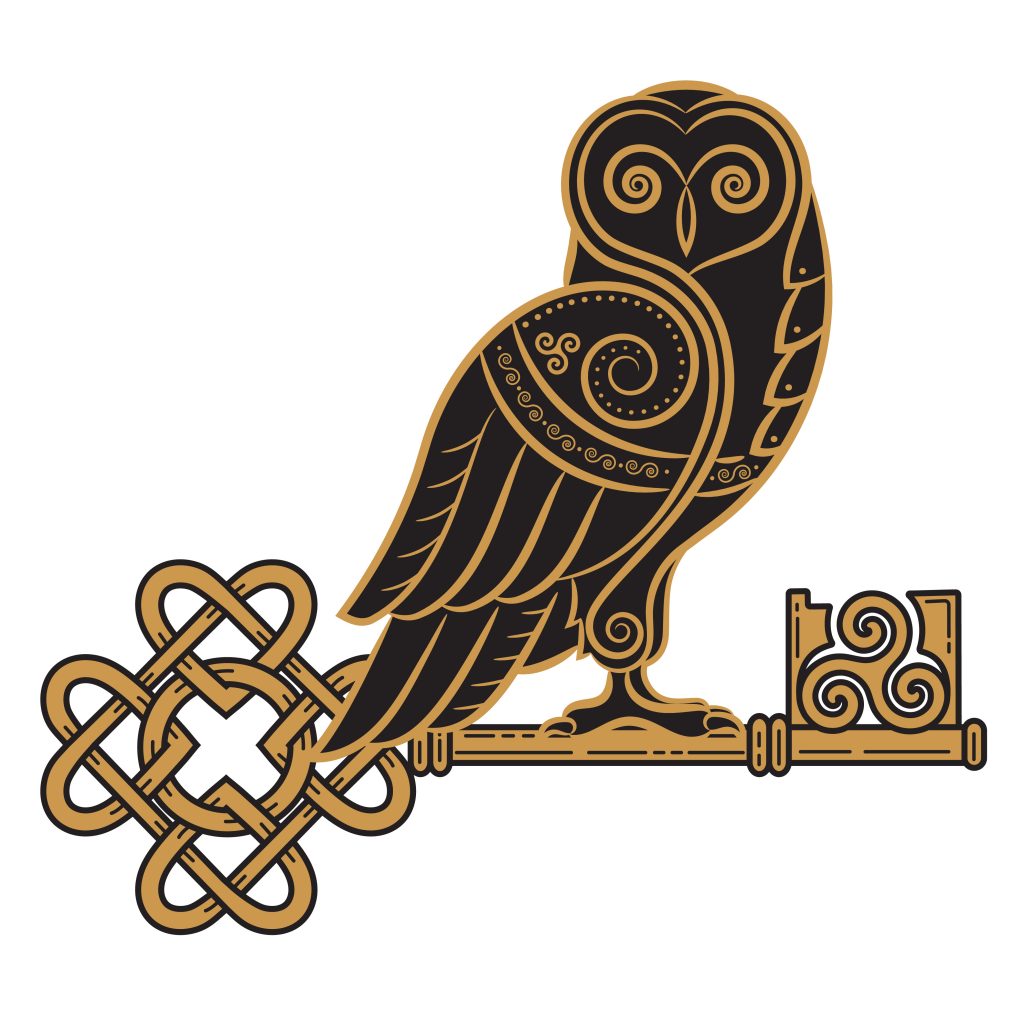
Tap into your inner wisdom. Take to heart the words of the 14th century poet, Rumi: “Passion and desire bind your heart. Remove the locks. Become a key, become a key.”

